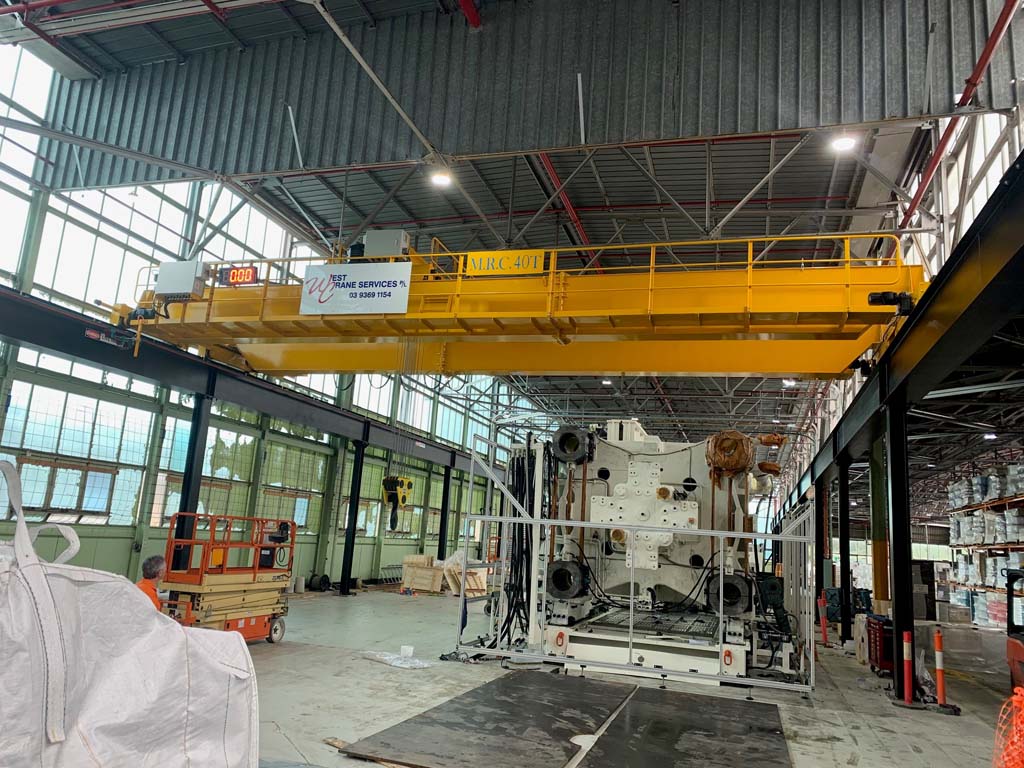Nante Underhung Overhead Cranes: What You Need to Know
08 September 2023
Discover Nante Underhung Overhead Cranes distributed by Hydromech. Get the essential insights for your lifting needs. Call us today at (03) 9791 1322.
Working with Nante underhung overhead cranes is an important aspect of various industries, such as manufacturing, construction, and logistics. These cranes provide a versatile and efficient solution for lifting and moving heavy loads within a confined space. This article will explore the key features, benefits, and safety considerations associated with underhung overhead cranes.
What is an Underhung Overhead Crane?
An underhung overhead crane is a type of crane that is designed to run on an elevated runway system. Unlike a top-running crane, where the runway rails support the bridge, an underhung crane’s bridge is suspended from the runway rails. This configuration allows the crane to move smoothly along the runway, providing greater flexibility and accessibility in lifting operations.
Components of an Underhung Overhead Crane
Nante’s underhung overhead crane consists of several key components:
• Bridge – The bridge is the horizontal beam that spans the width of the working area. It supports the hoist and trolley and moves along the runway rails.
• Hoist – The hoist is responsible for lifting and lowering the load. It is attached to the bridge and can be electrically or manually operated, depending on the crane’s design and application.
• Trolley – The trolley runs along the bridge and carries the hoist. It enables horizontal load movement, allowing precise positioning within the workspace.
• Runway Rails – The runway rails provide support for the underhung crane system. They are mounted on the structure or building columns and guide the movement of the bridge and trolley.
Common Types of Underhung Overhead Cranes
Different types of underhung overhead cranes are available, each with specific features and applications. Some common types include:
• Single Girder Underhung Crane – A single girder underhung crane has one main bridge beam suitable for light to moderate lifting operations. It offers cost-effective solutions for areas with limited headroom.
• Double Girder Underhung Crane – A double girder underhung crane consists of two main bridge beams, providing higher lifting capacities than single girder cranes. It is commonly used in heavy-duty applications.
• Monorail Underhung Crane – A monorail underhung crane is designed for straight-line movement along a fixed path. It is suitable for applications that require repetitive movement of loads within a specific area.
Advantages of Underhung Overhead Cranes
Underhung overhead cranes offer several advantages, making them a preferred choice in various industries:
1. Space Efficiency: The underhung design maximises the space as the crane system is suspended from the runway rails. This allows for better utilisation of the working area, especially in facilities with low headroom.
2. Precise Load Control: Underhung cranes provide precise load control and positioning due to the flexibility of the trolley and bridge movements. This feature is crucial in applications where accuracy is paramount.
3. Versatility: These cranes can be customised to meet specific lifting requirements, including capacity, span, and speed. They offer versatility in handling various load types and sizes.
4. Cost-Effectiveness: Underhung overhead cranes are often more cost-effective than other crane types. Their design requires fewer materials, resulting in reduced construction and installation costs.
Choosing the Right Underhung Overhead Crane for Your Needs
When selecting an underhung overhead crane, consider the following factors:
1. Assess your lifting requirements and choose a crane with an appropriate lifting capacity. Ensure the crane can handle the maximum weight of your lifting loads.
2. Consider the span and available working area in your facility. Choose a crane with a suitable span that allows for efficient workspace coverage.
3. Consider the environmental conditions the crane will operate, such as temperature, humidity, and potential corrosive substances. Ensure that the crane’s materials and components are suitable for the environment.
Underhung overhead cranes provide efficient and versatile solutions for lifting and moving heavy loads in various industries. Their space-saving design, precise load control, and customisation options make them valuable assets in industrial operations.
Optimized by: Netwizard SEO
